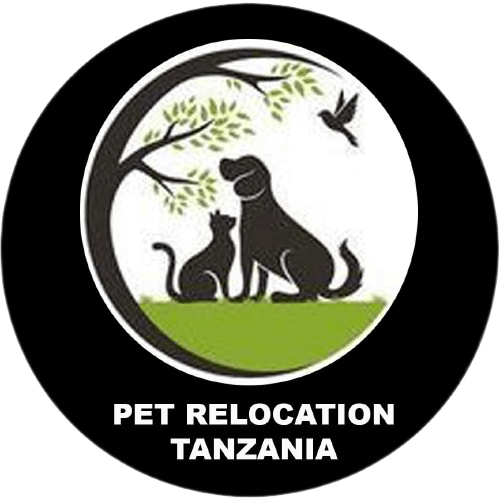Complete Pet Travel Guide for Tanzania & Zanzibar
Planning to travel with your pet to or from Tanzania and Zanzibar? Our comprehensive pet travel guide covers everything you need to know for safe, stress-free animal transport. From IATA crate requirements to travel day checklists, we’ve compiled expert tips to ensure your furry family member’s journey goes smoothly.
HOW TO PROPERLY MEASURE THE SIZE OF YOUR PET AND CRATE
To ensure a comfortable journey for your pet, it's crucial to select the correct crate size. IATA-approved crates are available in standard sizes, while tall breeds can opt for customized crates that meet all IATA requirements Your pet must be able to stand in his natural position, sit down and turn around when inside the IATA approved carriers
HERE’S HOW TO MEASURE YOUR PETS’ SIZE:
A = length of the pet from tip of nose to root of tail.
B = Height from ground to elbow joint
C = width across right & left shoulders
D = height of the pet in natural standing position from ground to the top of the head or the tip of the ear in erect ear breeds.
CHOOSING THE CORRECT SIZE CRATE:
USE INTERNAL DIMENSIONS OF THE CRATE FOR PERFECT FIT
Container length = A + ½ B
Container width = C x 2
Container height E = D + bedding Snub-nosed breeds require 10% larger container
CRATE SPECIFICATIONS
(IATA GENERAL CRATE REQUIREMENTS)
• Constructed out of rigid plastic, metal or wood
• 2 preferably 3 secure door fasteners • Door mesh cannot be larger than 25mm x 25mm
• Metal nuts and bolts only (no plastic or twist locks) Snap-sided kennels or kennels with plastic side latches will not be accepted
• Inside of the crate must have nothing sharp or projecting that could injure dog
• Ventilation the whole of one end (door) and three other sides
• Leakproof solid floor
• Solid roof
• Handle/s
• 2 accessIble bowls
• Absorbent bedding
• Name of dog and documents taped to the top of crate
RECOMMENDATIONS:
• Zip ties to lock door prior to departure
• Water bottle and a small packet of food taped on top of the crate
PROHIBITED ITEMS: Toys, Medication, Thick bedding, Straw, hay or wood shavings
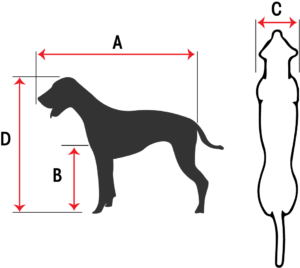
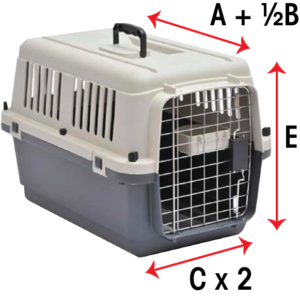
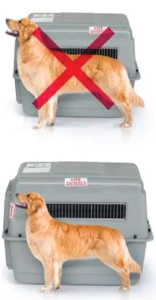
We understand that traveling can be an anxious time for your pet, especially during long distances or unfamiliar situations like flying. Here are some tips to get your pet used to the crate:
- Introduce the Crate: Make the crate a positive and inviting space by placing treats, toys, and comfy bedding inside. Let your pet explore the crate at their own pace, associating it with positive experiences.
- Gradual Introduction: Encourage your pet to spend short periods of time inside the crate. Begin with the door open, allowing them to enter and exit freely. Reward them with treats and praise for going in and staying calm.
- Mealtime in the Crate: Make mealtime an enjoyable experience by feeding your pet inside the crate. This reinforces positive associations and helps them feel comfortable spending more time inside.
- Increase Crate Time: Gradually extend the duration your pet spends in the crate. Start with short intervals and gradually increase them. Remember to provide toys and treats to keep them occupied and content.
- Positive Reinforcement: Reward your pet with treats and praise whenever they enter the crate willingly or exhibit calm behaviour inside. This helps them associate the crate with positive rewards and reinforces desired behaviour.
- Safe Space: The crate should be a safe haven for your pet. Never use it as a form of punishment. Ensure the crate is comfortable, well-ventilated, and the right size for your pet to stand, turn around, and lie down comfortably.
- Gradual Independence: Once your pet is comfortable inside the crate, begin leaving them alone for short periods. Start by staying nearby and gradually increase the distance and time spent apart.
By allowing your pet time to acclimate to their crate and providing familiar objects, you’re taking important steps to reduce their travel anxiety. Remember, their well-being and comfort are top priorities.
Remember, patience and consistency are key when crate training your pet. Each pet is unique, so the training timeline may vary. With love, positive reinforcement, and a gradual approach, you can create a safe and cosy den for your furry companion!
Personalised Crate Training
Crate Closers
INTERNATIONAL AIR TRANSPORT ASSOCIATION (IATA) GUIDELINES FOR CRATE CLOSERS
The pet’s crate should have ventilation on all 4 sides, have only one door and have metal bolts (not plastic) securing the top and bottom halves of the crates together. Clips are not acceptable for international pet airline travel.
Remember: Crate train early. Be patient and provide lots of love and reassurance!
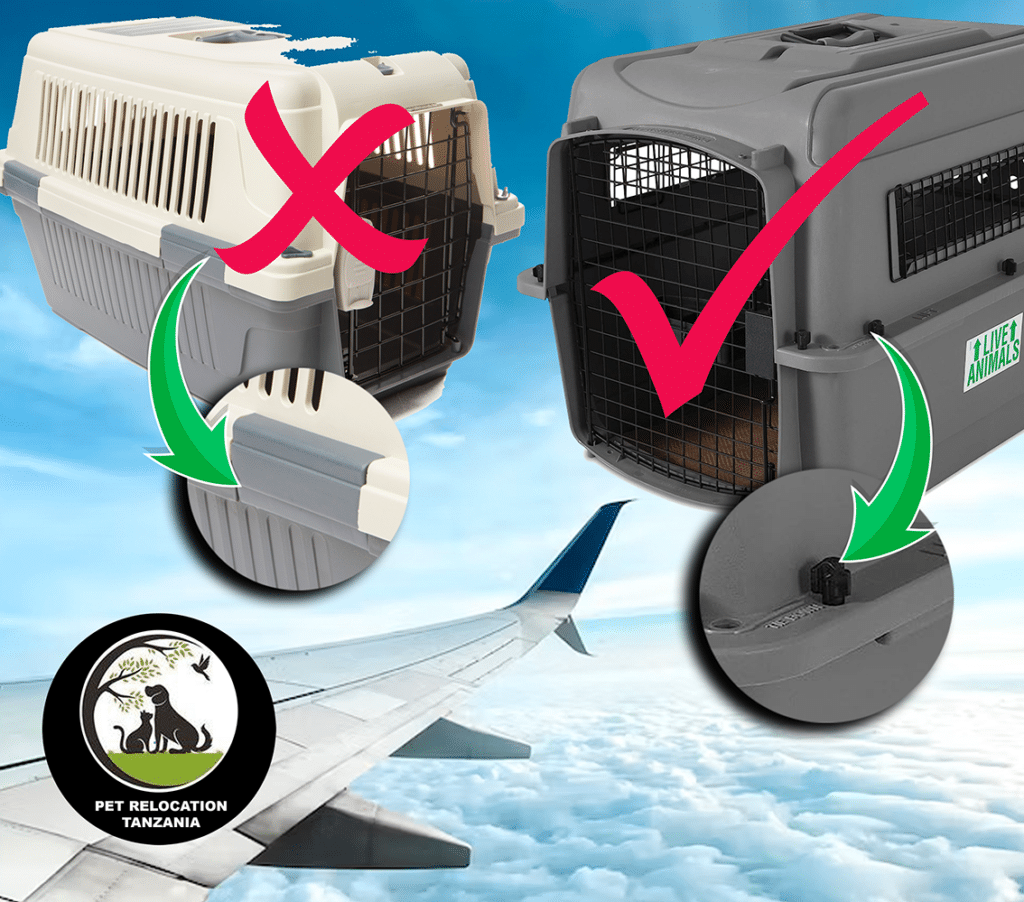
Moving Your Pet to Tanzania?
🇹🇿 Planning to Bring Your Pet to Tanzania? Here's What You Need!
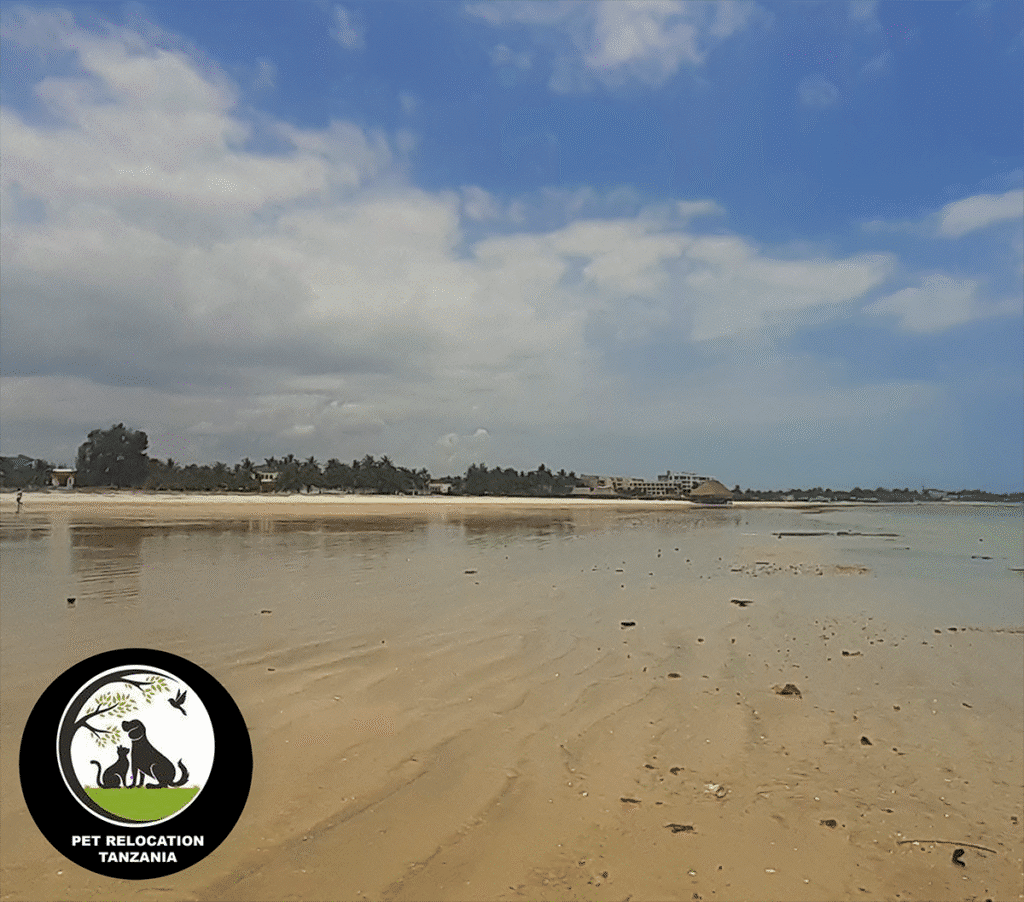
Moving Your Pet to Zanzibar - Island Paradise Requires Extra Steps!
🏝️ Zanzibar Calling? Your Pet's Journey Just Got More Complex! Dreaming of island life in Zanzibar with your beloved pet? It's absolutely possible - but requires expert navigation!

Travelling with your Pet in the Cargo Hold
With the right precautions and considerations, it can be a safe and viable option for your furry family members.
We know there’s a lot of talk about pet travel in the cargo hold, and we wanted to shed some light on this topic. Here’s why:
- Dedicated Pet Spaces: Many airlines have dedicated and climate-controlled areas in the cargo hold specifically designed for pets. These spaces are carefully monitored to ensure a safe and comfortable journey.
- Expert Handling: Airlines have trained staff who understand the unique needs of travelling pets. They handle the loading, unloading, and in-flight care of your pets with professionalism and care.
- Separation from Luggage: Your pet won’t be in between regular baggage. They are typically loaded last ensuring their well-being.
- Climate Control: Cargo holds are equipped with climate control systems to maintain a suitable temperature and ensure that your pet is comfortable during the journey.
- Safety Regulations: Airlines must adhere to strict safety regulations when it comes to pet travel. This includes secure crates, proper ventilation, and more, to protect your pet.
- Peaceful Environment: Cargo holds are quieter and darker than the passenger cabin, providing a more tranquil environment for your pet to rest during the flight.
- Larger Crates: The cargo hold can accommodate larger pet crates, allowing your pet more space to move around, stand, and lie down comfortably.
- Reduced Stress for Passengers: Pet travel in the cargo hold can help reduce stress for passengers who may have allergies or aversions to animals. It ensures a more comfortable journey for all travellers.
- Vet-Approved Travel: Many veterinarians and pet experts agree that, with the right preparations, cargo travel can be a suitable option for many pets, especially those travelling long distances.
While travelling in the cargo hold can be safe and comfortable for your pet, it’s important to plan carefully. Choose airlines that prioritize pet safety, ensure your pet’s crate meets IATA specifications, and provide them with familiar comforts like bedding.
Remember, pet travel can be a wonderful experience with the right preparations. Safe travels to you and your furry friends!
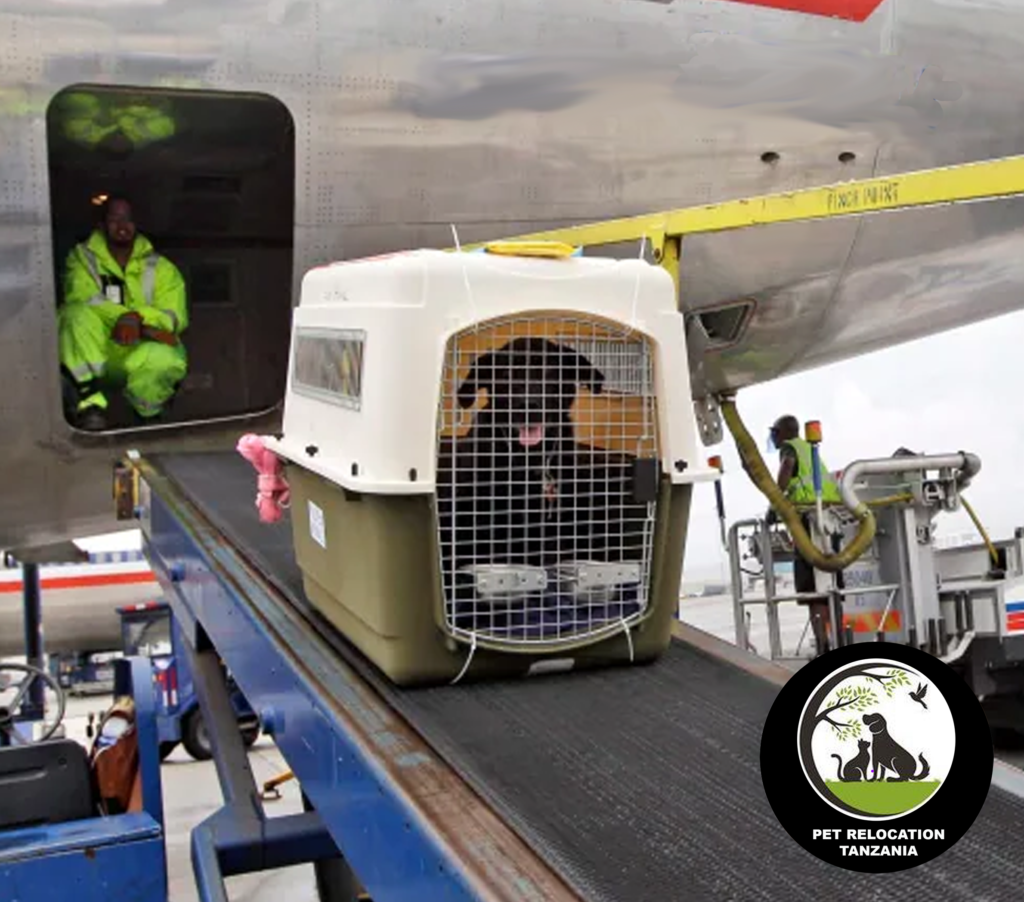
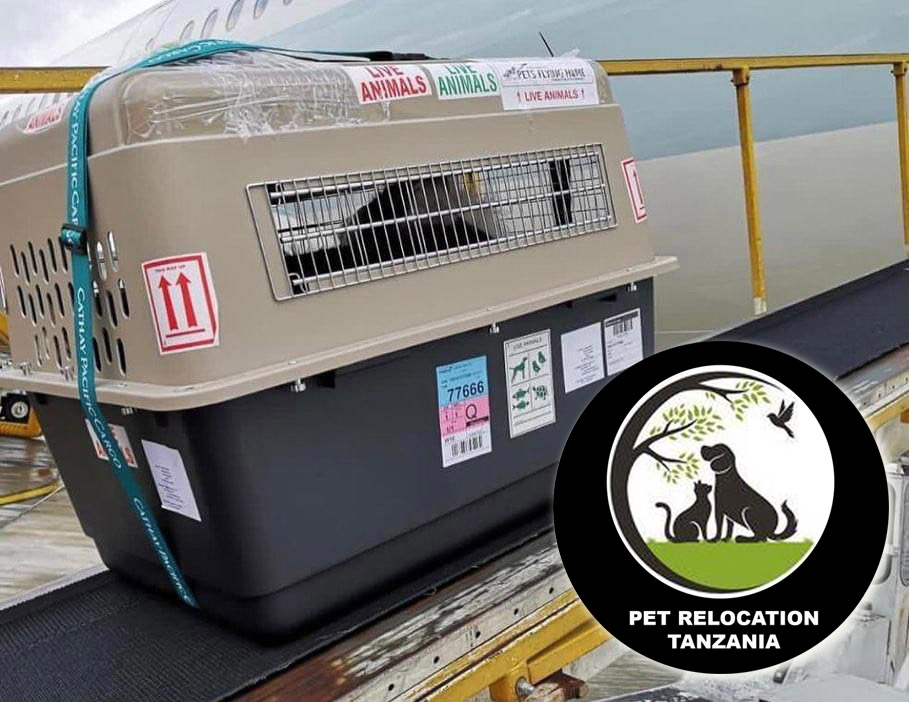
Flying with Your Pet
Secure Your Spot: Book Your Airline Early for a Smooth Pet Relocation Journey!
The earlier you book your airline, the better! Here’s why:
- Direct Flight Advantage: Whenever possible, opt for a direct flight reducing potential disruptions for both you and your furry companion for a more seamless and stress-free journey.
- Limited Animal Capacity: Keep in mind that most flights have a limited capacity for transporting animals. By booking early, you secure a spot for your pet and avoid the risk of flights being fully booked.
- Prompt Communication: Once your flight is booked, you can immediately start liaising with the airline regarding transportation arrangements for your pet.
- Organized and Stress-Free Relocation: By taking early action, you can plan ahead, make necessary arrangements, and alleviate any potential last-minute stress.
Remember, booking your airline early sets the foundation for a successful and comfortable journey with your beloved pet.
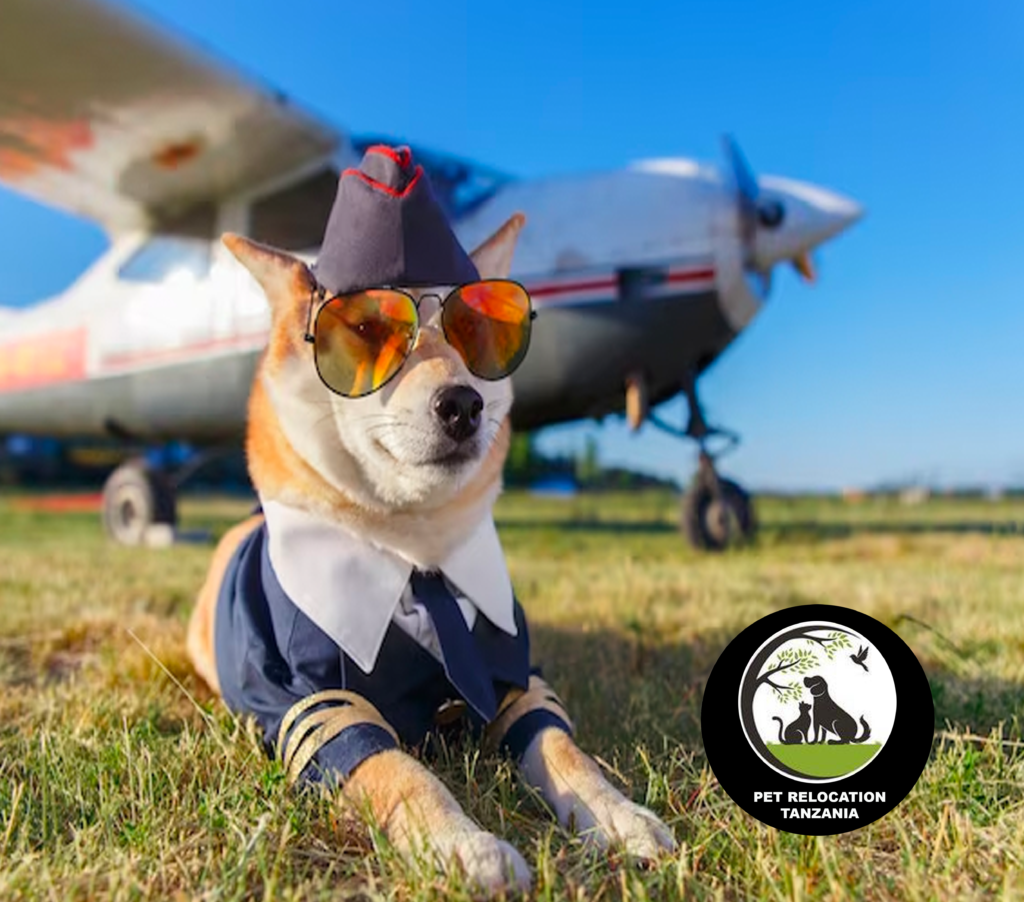
Checklist for the Day of Flying
When taking your pet to the airport, it's essential to be well-prepared to ensure their safety and comfort during the journey.
- Pet’s Travel Documents: This includes your pet’s health certificate, vaccination records, and any required exit and entry permits. Keep these documents in a secure, easily accessible folder or envelope.
- Pet’s ID Tags: Ensure your pet is wearing a collar with an ID tag that includes your contact information. This is a crucial safety measure in case of accidental separation.
- Leash and Harness: Keep your pet on a leash and harness when moving through the airport. Even if your pet is well-trained, airports can be crowded and chaotic. Keep it on you for when collecting
- Pet Carrier: Use an airline-approved pet carrier that complies with their regulations. Ensure its well-ventilated and offers your pet enough space to stand, turn, and lie down comfortably.
- Bedding and Comfort Items: Place your pet’s favourite blanket or bedding, or an item of your clothing. Familiar items can provide comfort during the journey.
- Food and Water: Pack enough food and water for your trip, plus extra in case of delays or unforeseen circumstances. A collapsible water bowl it also recommended
- Poop Bags: Carry a supply of poop bags to clean up after your pet if necessary. Many airports have designated pet relief areas.
- Medications: If your pet requires medications, bring an ample supply, along with the prescription and instructions.
- Stress-Reducing Aids: If your pet gets anxious during travel, consider using natural calming aids like pheromone sprays or consult your veterinarian for safe options.
- Airline Contact Information: Have the airline’s contact information readily available in case you need assistance or encounter any issues during your journey.
- Patience and Calm: Lastly, bring plenty of patience and a calm demeanour. Travel can be stressful for pets, and your reassurance can make a significant difference.
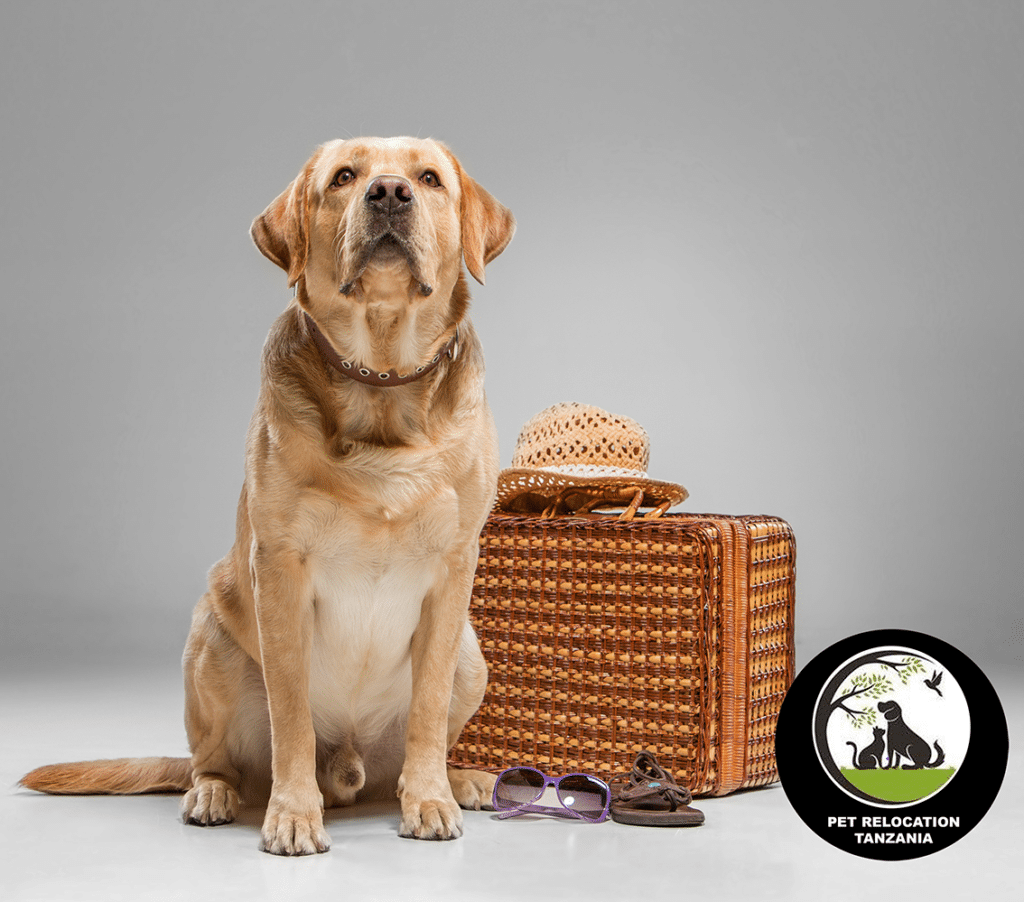
Checklist for Flying in the Cargo Hold
If your furry friend is taking a journey in the cargo hold, these steps are essential to ensure their safety and well-being:
- Crate Markings: Clearly mark the crate with your pet’s name, flight information, and your contact information.
- Documents Backup: Create copies of all essential documents, place them in a plastic sleeve, and tape them securely to the top of the crate.
- Identification Details: Attach the following information to your crate in a plastic sleeve: name of pet, your name and cell phone number, any medical considerations, temperament issues (if any), and a picture of your pet. You can also include your pet’s veterinary information.
- Live Animal Stickers: Attach mandatory “Live Animal” and directional stickers to the crate.
- Pick-up Contact: Include contact details for the person or collection agent who will be collecting your pet at the destination.
- Pet’s ID: Make sure your pet is wearing a collar with an ID tag that includes destination details. For cats, breakaway collars are the safest option. Also, ensure your pet has a microchip.
- Hydration: Tape a water bottle to the top of the crate to provide your pet with access to water during the journey.
- Security: Add extra protection by using cable ties to secure the crate door and corners. This ensures your pet’s crate remains secure.
- Leash and Harness: Keep your pet’s leash and harness within reach for easy access when you collect them upon arrival.
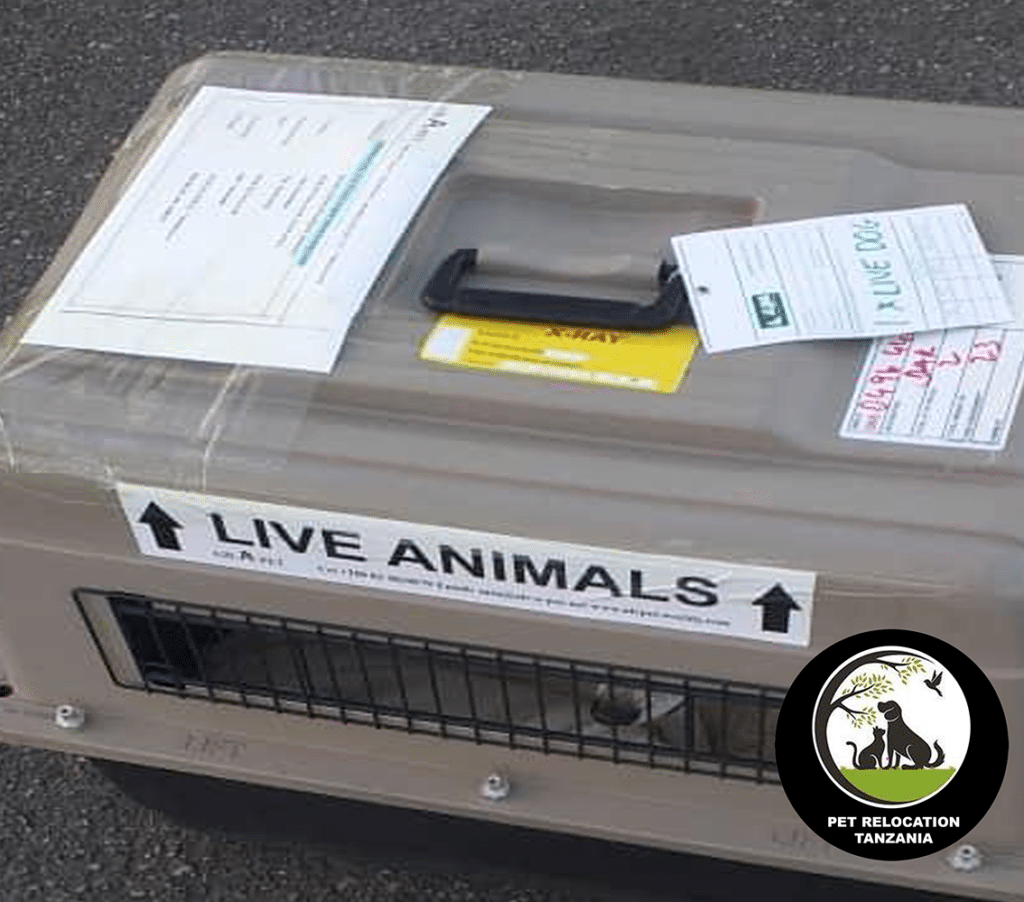
Food and Water
Preparing Your Pet for a Comfortable Flight
When it comes to food and water for your furry friend during travel, here’s what you need to know:
- Feeding Time: It’s recommended to feed your dog or cat NO LATER THAN SIX HOURS before the flight. This allows ample time for digestion and reduces the chances of discomfort during the journey.
- Hydration Essentials: Attach a water dish to the door of their crate to provide access to water before and after the flight. Remember, your pet won’t be given food or water during the flight itself, so it’s vital to ensure they are well-hydrated before take-off.
- Filling Water Bowls: Attached a bottle of water to the top of their crate. This ensures that when your pet can get water, there is a bottle available.
It’s important to comply with airline regulations regarding food and water requirements for pets during travel. Always check the specific guidelines provided by the airline you’re flying with to ensure you are following their instructions.
Keep your pet comfortable and hydrated, so let’s do everything we can to make it as comfortable and pleasant as possible.
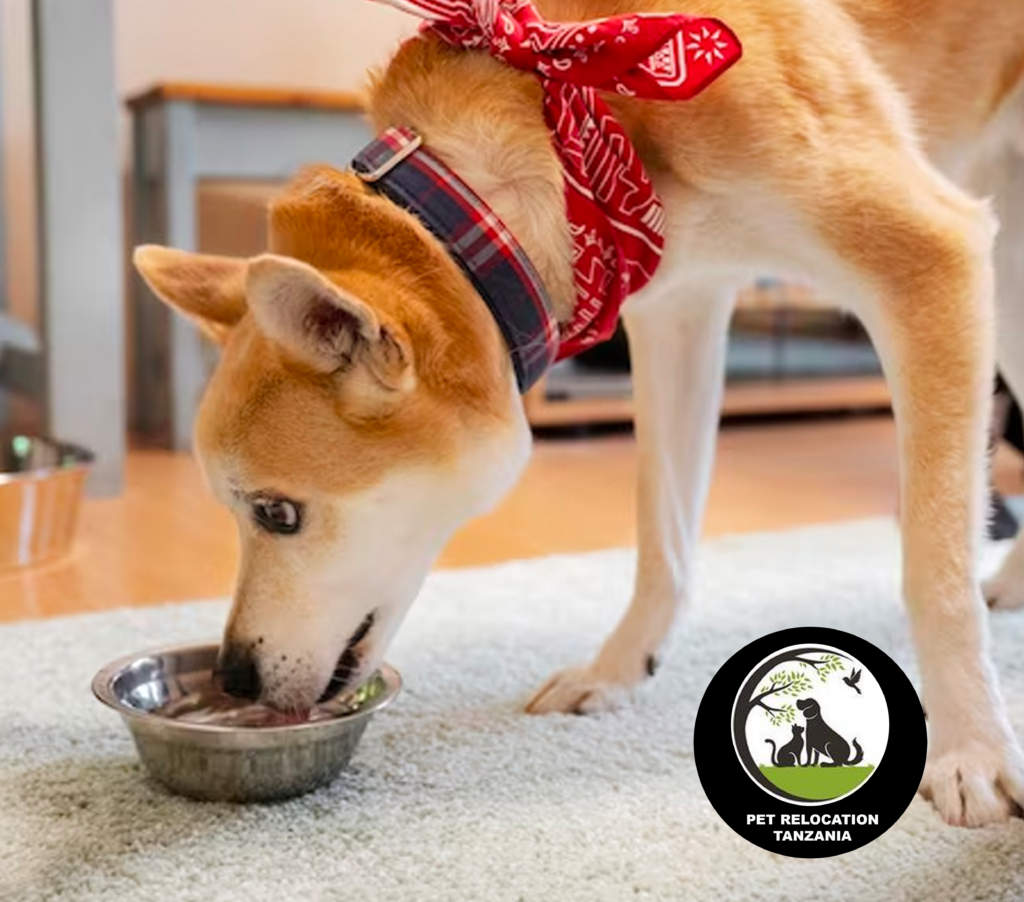
Tips for the Day of Travel
It's essential to be well-prepared to ensure their safety and comfort during the journey.
On Arrival at the Airport:
- Arrive Early: Arrive at the airport well in advance of your flight’s departure. This allows ample time for check-in and any necessary paperwork.
- Pet’s Travel Documents: This includes your pet’s health certificate, vaccination records, and any required exit and entry permits. Keep these documents in a secure, easily accessible folder or envelope.
- Final Check: Give your pet a final check to ensure their collar, ID tag, and any required documents are in place.
- Comfort Items: Place familiar bedding and a favourite toy (if allowed by airline) inside the carrier. These items can provide comfort and familiarity to your pet during the journey.
- Positive Reinforcement: When placing your pet in the carrier, use treats and positive reinforcement to create a stress-free experience.
On Arrival at your Destination:
- Immediate Inspection: After your flight lands, inspect your pet’s crate as soon as possible. Ensure your pet is safe, and provide water and any necessary care immediately.
- Quarantine and Customs: If your destination requires quarantine or customs declarations, be prepared to complete these processes.
- Stay Calm: Keep in mind that your pet may be disoriented or anxious after the journey. Offer reassurance and a familiar environment when you reach your destination.
These measures help ensure your pet’s journey is safe and comfortable. Remember to check with your airline for any specific requirements they may have. Safe travels for you and your furry companion

Tips for the Day After Travel
It's essential to be prepared for their well-being and comfort as they adapt to their new surroundings. Here's what to expect and what to do:
- Arrival and Inspection: After your flight lands, your pet will be transported to a designated area for cargo pet arrivals. Immediately ensure your pet is safe. Open the crate carefully and calmly reassure your pet. They might be anxious or disoriented.
- Provide Water and Comfort: Offer your pet water to help them rehydrate. Provide familiar bedding and toys to create a comfortable and reassuring environment.
- Transition Time: Allow your pet some transition time to adapt to their new surroundings. This can be a new home, hotel, or other destination. Gradually reintroduce routines and provide plenty of love and attention.
- Post-Travel Care: Keep an eye on your pet for any signs of stress or discomfort in the hours and days following travel. If your pet seems unwell, contact a local veterinarian for a check-up.
- Stay Calm and Patient: Be patient and calm as your pet acclimates to their new environment. Spend quality time with them to reassure and comfort them.
- Safety First: Ensure the new space is pet-proofed and safe for your pet. Remove any hazards.
- Diet and Routine: Stick to your pet’s regular diet and feeding schedule as closely as possible. Maintain their usual routines to provide a sense of stability.
- Health Check: Consider scheduling a post-travel visit to the veterinarian for a wellness check-up.
- Pet Identification: Double-check your pet’s ID tag and microchip information to ensure it’s up to date with your current contact details.
- Exploration and Socialization: Gradually introduce your pet to their new surroundings and any other pets or people. Socialization and exploration will help your pet feel more at ease.
- Be Supportive: Your pet may take some time to fully adjust. Be supportive and understanding during this transition period.
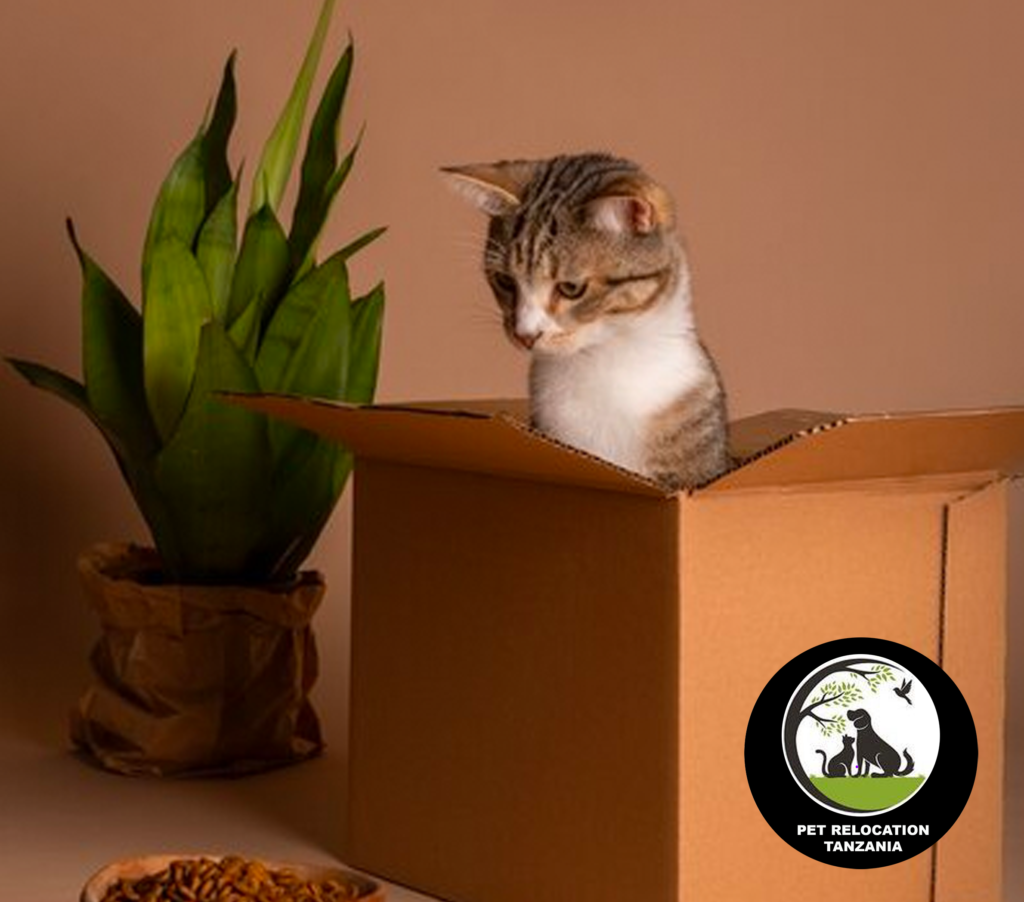
Rabies Titre Test
Ensuring Pet's Immunity for International Travel
For pet owners planning to travel to rabies-free or rabies-controlled countries, the rabies-neutralizing antibody titre (RNAT) test is a crucial requirement.
- Measuring Antibody Levels: The RNAT test assesses the level of rabies antibodies in your pet’s blood following the rabies vaccination. It determines if your dog or cat has developed sufficient immunity against rabies, ensuring their safety and compliance with entry regulations.
- Timing of the Test: The rabies titre test is usually conducted between one to 30 days after the rabies vaccination. This window allows enough time for the antibodies to develop and be detected in the blood. Follow the recommended timeline provided by your veterinarian.
- Accredited Vet and Approved Lab: To ensure accurate results, the blood sample for the analysis must be drawn by an accredited veterinarian. This guarantees reliable and valid test outcomes.
- Compliance for Safe Travel: The result of the rabies titre test determines whether your pet can enter a rabies-free country. By completing this important step, you demonstrate your pet’s immunity to rabies, contributing to a safe and hassle-free travel experience.
By adhering to the rabies titre test requirement, you prioritize the safety of your pet and the community. It’s an important measure to prevent the spread of rabies and maintain the health of both animals and humans.
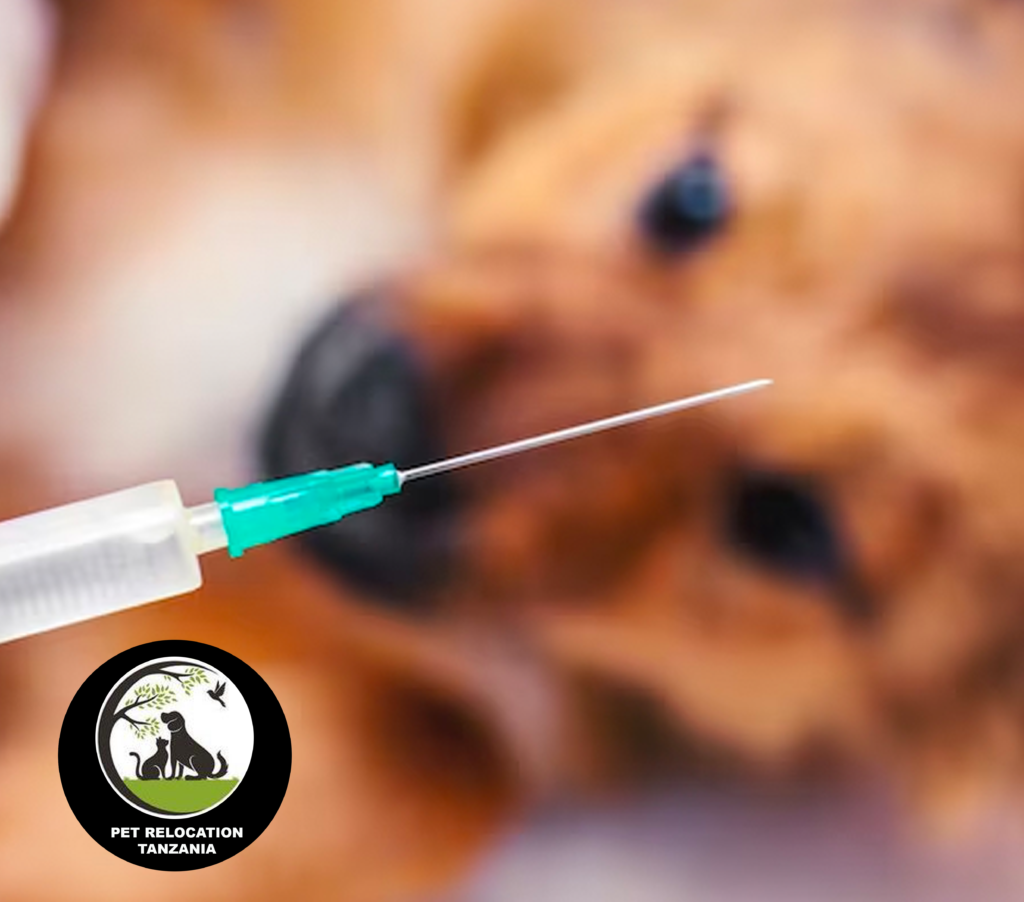
Pet Air Travel Restrictions
It's crucial to be aware of restrictions when it comes to air travel. Different airlines and countries may have specific rules, particularly for certain breeds that are considered "brachycephalic" or have distinctive characteristics. Here's what you need to know:
- Age Restriction: Cats and dogs need to be over 8 weeks old. some countries may have specific age requirements for entry, so research the regulations of your destination.
- Breed restrictions are limitations imposed on certain dog breeds, often due to health and safety concerns during air travel. (These restrictions can vary between airlines and destinations.)
- Brachycephalic Breeds: These are dogs with short noses and flat faces, like Bulldogs, Pugs, and Boxers. These breeds can have respiratory issues that can be exacerbated during air travel, especially in cargo holds.
- Aggressive Breeds: Some airlines may have restrictions on breeds with aggressive reputations, such as Pit Bulls or Rottweilers. These breeds have been linked to incidents of aggression or stress during travel.
- Check with the Airline: Before booking your flight, confirm the airline’s pet policy, including any breed restrictions.
- Choose the Right Carrier: Ensure your pet’s carrier meets airline regulations and provides adequate ventilation and space.
- Safety First: The safety and comfort of your pet should always be the top priority.
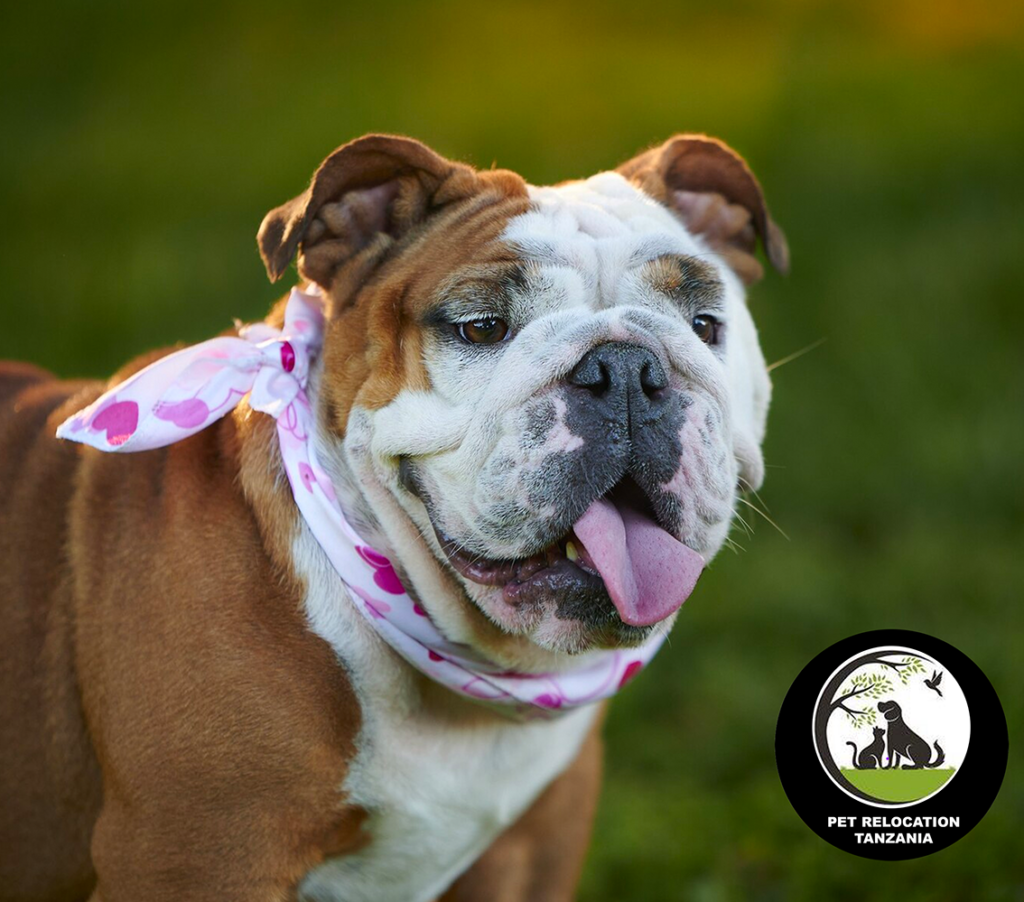
Stress Less!
How to have a smooth trip with Your Pet
- Preparation is Key: Research airline policies, pet requirements, and ensure all paperwork is in order.
- The Right Carrier: Investing in a comfortable, airline-approved carrier is crucial
- Trial Runs: Get your pet used to the carrier gradually before the trip. Short practice sessions and treats inside make it feel like a comfy den.
- Vet Check: Schedule a pre-flight check-up to ensure your pet is healthy and fit for travel.
- Pack Essentials: Pack their favourite toys, familiar bedding, and enough food for the journey. Familiar scents and comforts go a long way.
- Stay Calm: Your furry friends pick up on your vibes. Staying calm and relaxed during check-in and security checks help keep your pet at ease.
- Positive Reinforcement: Treats and praise during the journey goes a long way in reducing stress.
- Enjoy the Adventure: Lastly, remember that flying with your pet can be an exciting adventure. Seeing new places together creates wonderful memories!
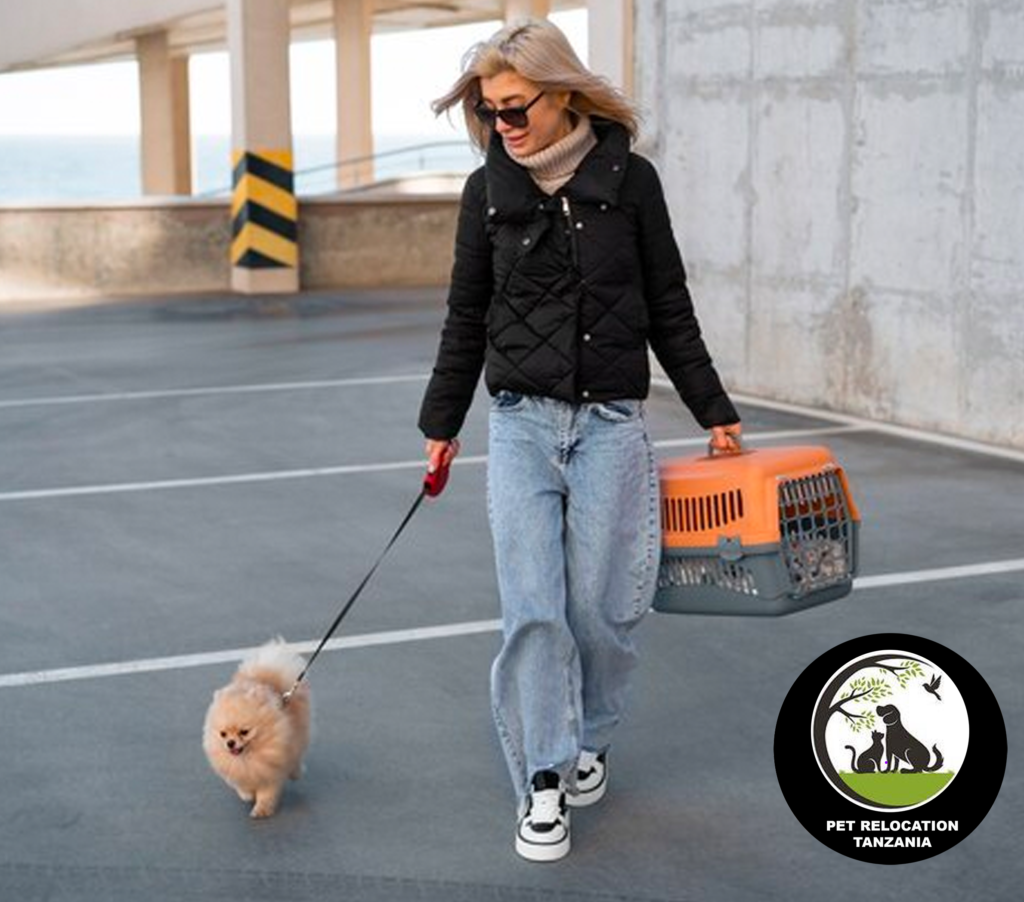
Requirements For My Destination
Planning a pet relocation and wondering about the requirements for your destination country?
Here’s a quick guide on how to know and fulfil the requirements for a smooth and hassle-free journey:
- Research Your Destination: Start by researching the specific pet import regulations of your destination country. Each country has its own set of rules regarding vaccinations, microchipping, quarantine periods, and more.
- Official Government Websites: Visit the official government websites of the destination country or contact their relevant authorities responsible for animal imports. They provide up-to-date and accurate information on the pet entry requirements.
- Consult with Our Experts: Reach out to our experienced team at Pet Relocation Tanzania. We have a wealth of knowledge and can provide personalized guidance from documentation to health certificates, we’ll ensure you have everything in order.
- Veterinary Assistance: Pet Relocation Tanzania will help with health checks, vaccinations, and completing required paperwork.
- Plan Ahead: Some countries have specific timelines for vaccinations and health checks. Pet Relocation Tanzania will ensure you meet all the deadlines and requirements.
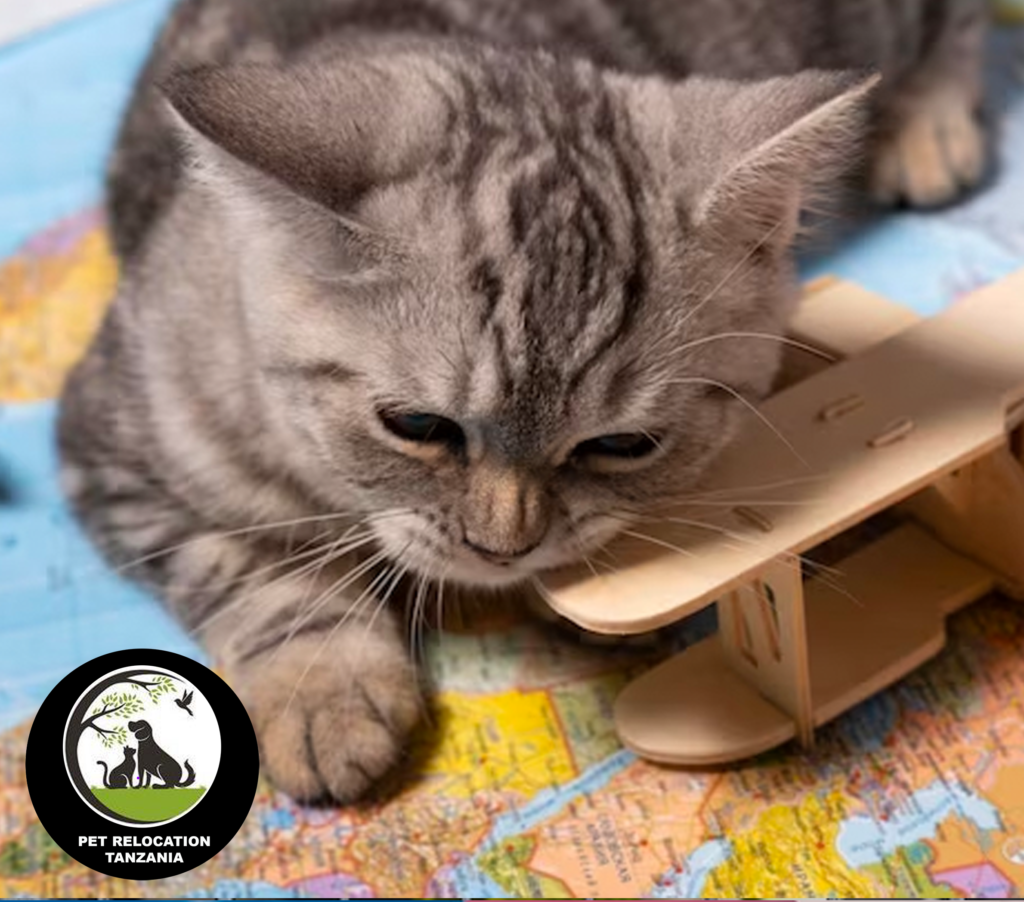
Tips on Feeding and Hydration
Ensuring your pet is well-fed and hydrated before a flight is crucial for their comfort and safety.
Here’s what you need to know:
- 𝗙𝗲𝗲𝗱𝗶𝗻𝗴:
BEFORE THE FLIGHT: Feed your pet a light meal about 4-6 hours before departure. This helps prevent an upset stomach during the flight.
DAY OF TRAVEL: Avoid giving a large meal right before the flight to minimize the risk of nausea. - 𝗛𝘆𝗱𝗿𝗮𝘁𝗶𝗼𝗻:
BEFORE THE FLIGHT: Offer water up to the time of departure, but avoid giving a lot just before boarding to prevent accidents.
DURING THE FLIGHT: Freeze a small dish or tray of water the night before. It will melt slowly, providing hydration without spillage. - 𝗜𝗻-𝗙𝗹𝗶𝗴𝗵𝘁 𝗧𝗶𝗽𝘀:
CRATE SETUP: Attach a small pouch of dried food and a water bottle to the outside of the crate for long flights. Airline staff can feed and water your pet during layovers if needed.
COMFORT: Ensure your pet’s crate is lined with absorbent bedding and marked with “Live Animal” and your contact details.
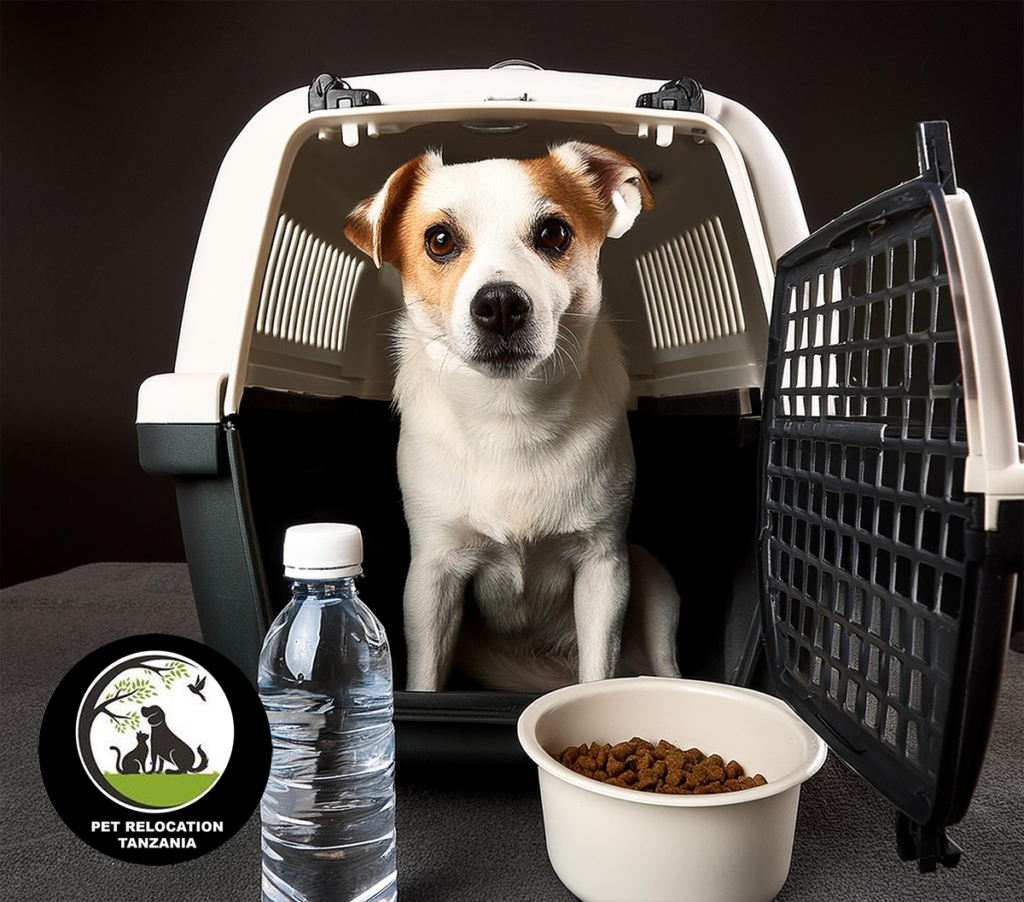
Moving Your Pet from a Cold Climate to Tanzania or Zanzibar
Relocating your furry family member from a chilly climate to our sunny Tanzania or tropical Zanzibar?
Here’s what you need to know for a smooth transition:
𝗧𝗲𝗺𝗽𝗲𝗿𝗮𝘁𝘂𝗿𝗲 𝗧𝗿𝗮𝗻𝘀𝗶𝘁𝗶𝗼𝗻 𝗣𝗹𝗮𝗻𝗻𝗶𝗻𝗴
Your pet needs time to adjust from cold to tropical temperatures.
Consider:
🌴 Gradually acclimating them before travel when possible
🌴 Booking flights during cooler morning/evening hours
🌴 Using climate-controlled pet transport services
🌴 Ensuring proper ventilation in their travel crate
𝗛𝗲𝗮𝗹𝘁𝗵 𝗣𝗿𝗲𝗽𝗮𝗿𝗮𝘁𝗶𝗼𝗻𝘀
🌴 Schedule a vet visit at least 2 months before travel
🌴 Update all vaccinations (especially rabies)
🌴 Get proper parasite treatment before arrival
🌴 Obtain health certificates required for entry into Tanzania
🌴 Microchipping for both cats and dogs
𝗕𝗿𝗲𝗲𝗱 𝗖𝗼𝗻𝘀𝗶𝗱𝗲𝗿𝗮𝘁𝗶𝗼𝗻𝘀
Not all cold-climate breeds adapt easily to our heat!
Huskies, Malamutes, Saint Bernards and other thick-coated breeds will need extra care, including:
𝗜𝗻𝗱𝗼𝗼𝗿 𝗰𝗼𝗼𝗹𝗶𝗻𝗴 𝗼𝗽𝘁𝗶𝗼𝗻𝘀
🌴 Limited outdoor time during peak heat
🌴 Regular grooming to reduce coat thickness
🌴 Plenty of fresh water is always available
𝗔𝗿𝗿𝗶𝘃𝗮𝗹 𝗣𝗹𝗮𝗻𝘀
Have ready upon arrival:
🌴 Cool, quiet space for recovery from travel
🌴 Access to fresh water
🌴 Familiar toys or bedding for comfort
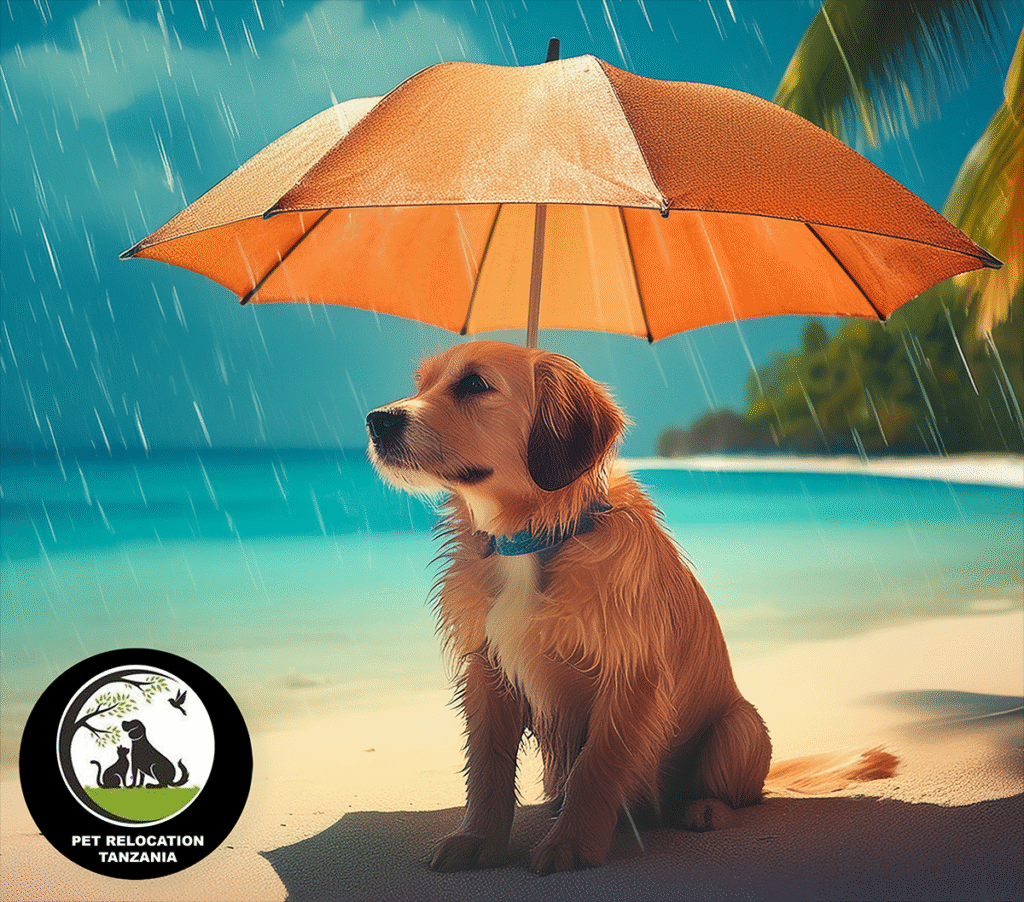
Relocating Your Pet Across Hemispheres?
Relocating your furry family member from a chilly climate to our sunny Tanzania or tropical Zanzibar?
Did you know pets can experience jet lag, too? When crossing multiple time zones or moving between seasons, your pet may need extra time to adjust.
Here’s how we help:
🌡️ Climate Preparation: Moving from our warm Tanzanian climate to cooler regions? We advise on breed-specific considerations and help prepare your pet for temperature changes.
🦟 Health Protection: Different regions mean different disease risks. Our veterinary partners ensure your pet has all necessary vaccinations and preventative treatments before departure.
⏰ Minimising Jet Lag: We provide guidance on gradually adjusting your pet’s schedule before travel and tips for helping them settle post-arrival.
🏥 Complete Health Screening: Our comprehensive blood work includes rabies titre testing and checks for any health issues that might be affected by climate change.
Whether you’re relocating to Europe, North America, or anywhere else across the globe, our team handles all export permits, flight bookings, and airport transport to ensure your pet’s journey is as comfortable as possible!

